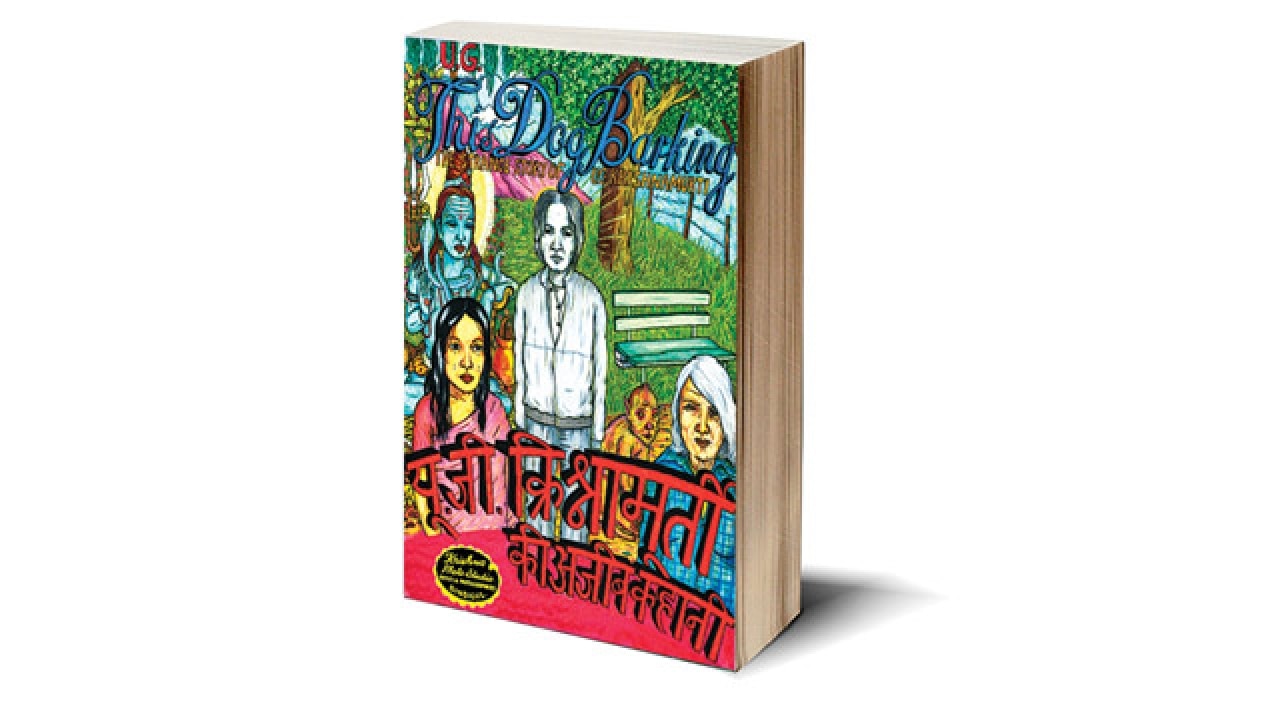
This book has been a ‘revelation’ in many ways. For one, it’s a graphic biography, in black-and-white, of a ‘guru’ called UG Krishnamurti — no relation to Jiddu Krishnamurti — who seems to have been quite well known in the West, where he ‘preached’ from the 1970s to 2007, when he died in Italy. Yet, few in India know about him. This is a little strange given how much we Indians tend to look up to the likes of Swami Vivekananda, Yogananda and Rajneesh who took Hindu spiritual practices to the West.
When you finish reading This Dog Barking, UG Krishnamurti’s comparative obscurity begins to make sense. For unlike others, Krishnamurti did not hold out ancient Hindu wisdom as a message of hope. In fact, going by what authors Nicholas C. Grey and James Farley quote him as saying, Krishnamurti’s ideas were premised on a rejection of some of the basic tenets of Hindu spiritual practice: the idea of ‘enlightenment’, ‘abstinence’ and ‘meditation’ leading to a higher spiritual state, or ‘gurus’ having special knowledge and ‘answers’. “The psychedelic experience is the basis of religious experience. The great spiritual heritage of India, of which they are so proud, was created by acid heads,” Krishnamurti is seen telling two unnamed followers who had gone to him seeking ‘answers’.
Two, Krishnamurti did not seek followers. In fact, he actively discouraged them. In that same conversation, he tells someone peremptorily: “Why do you come here day after day?...What do you want? Go and do not come back...” Also, “I don’t want all these people coming to see me. By allowing myself to be surrounded by them, I am participating in the illusion that they can get something from me. I try to discourage people by pointing out the ridiculous nature of these get-togethers.” The book gets its title from Krishnamurti’s disparaging description of his own ‘sermons’. The ‘barking’ is his response to the questions people throw at him, like “throwing stones at a dog... you translate the sound of this dog’s barking into meaningful language.”
And yet, for all of Krishnamurti’s disillusionment with spiritual gurus, the story of his life closely follows the template of many religious gurus. Krishnamurti was born in a well-to-do family in Machilipatnam, Andhra Pradesh, in 1918, with his mother, who died seven days after he was born, prophesying future greatness for him. With his grandfather, a close associate of Annie Besant and the Theosophical Society, Krishnamurti was instructed in Hindu religious texts since childhood, but a spiritual restlessness took hold of him in his youth, taking him from teacher to teacher, seeking, and failing, to find answers. There was personal crisis as well; Krishnamurti slid into deep depression, beset entirely by deep questions of death and life, and spent many years wandering aimlessly along the streets of Chicago, London and Paris, neglecting entirely his wife and four children. And finally, a kind of ‘resolution’ that manifested itself physiologically as swellings on several points on the head and torso, corresponding to the position of the chakras in Kundalini yoga shastras, a softening of the skin, and so on. And also the crystallisation of his ideas to wit, “There is nothing to understand” and there is “no way out”.